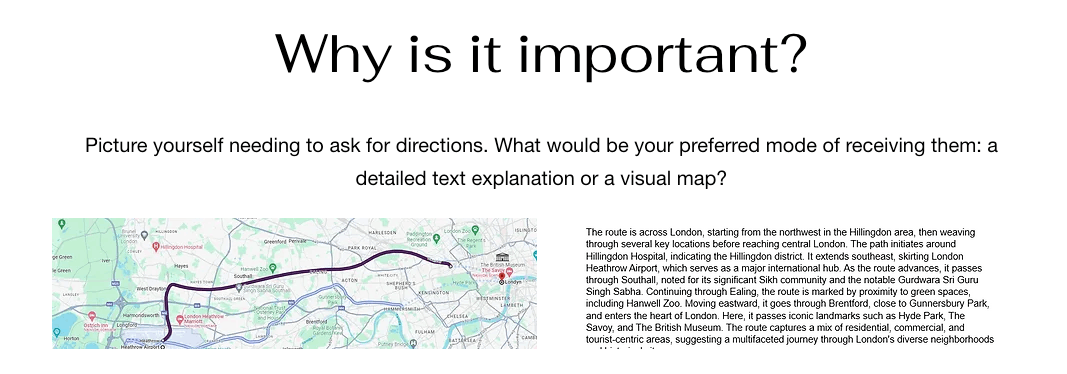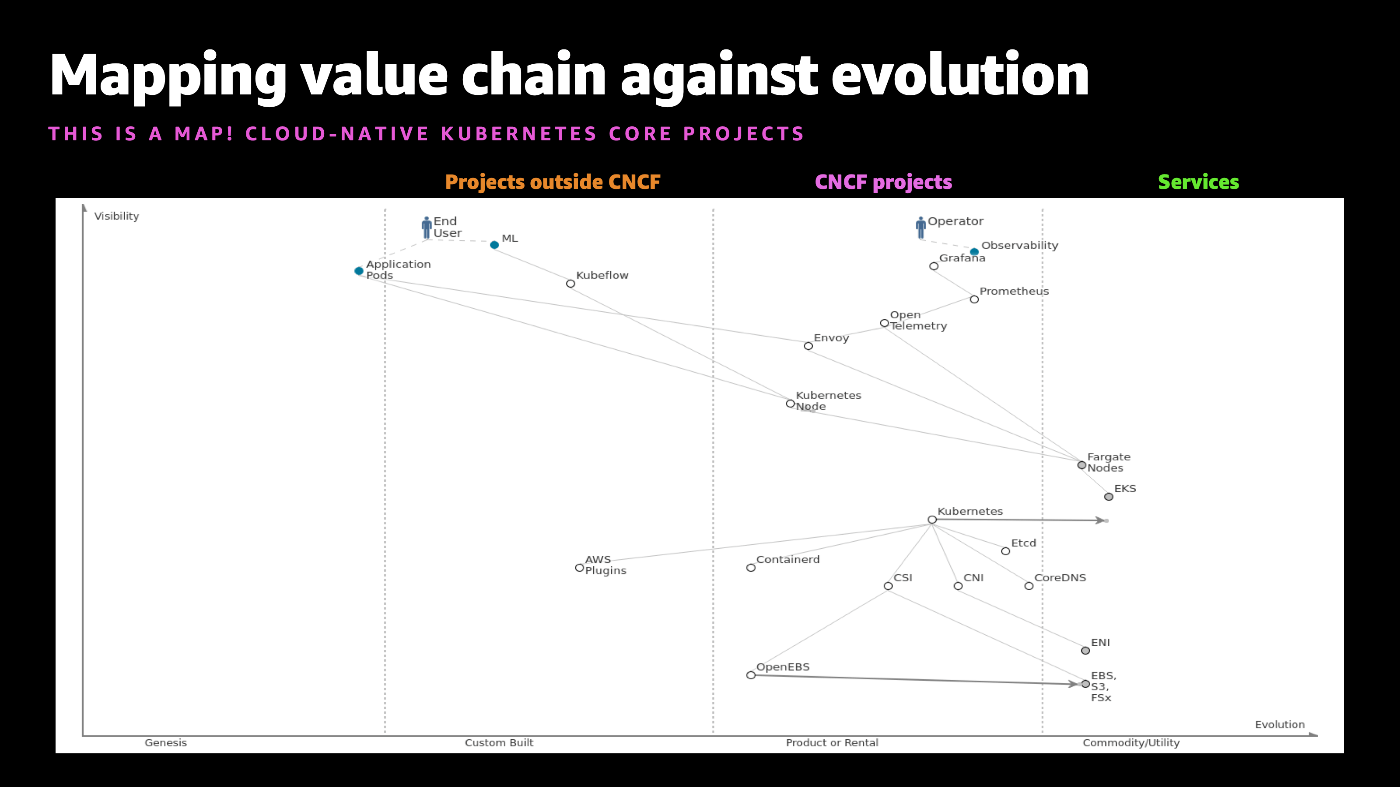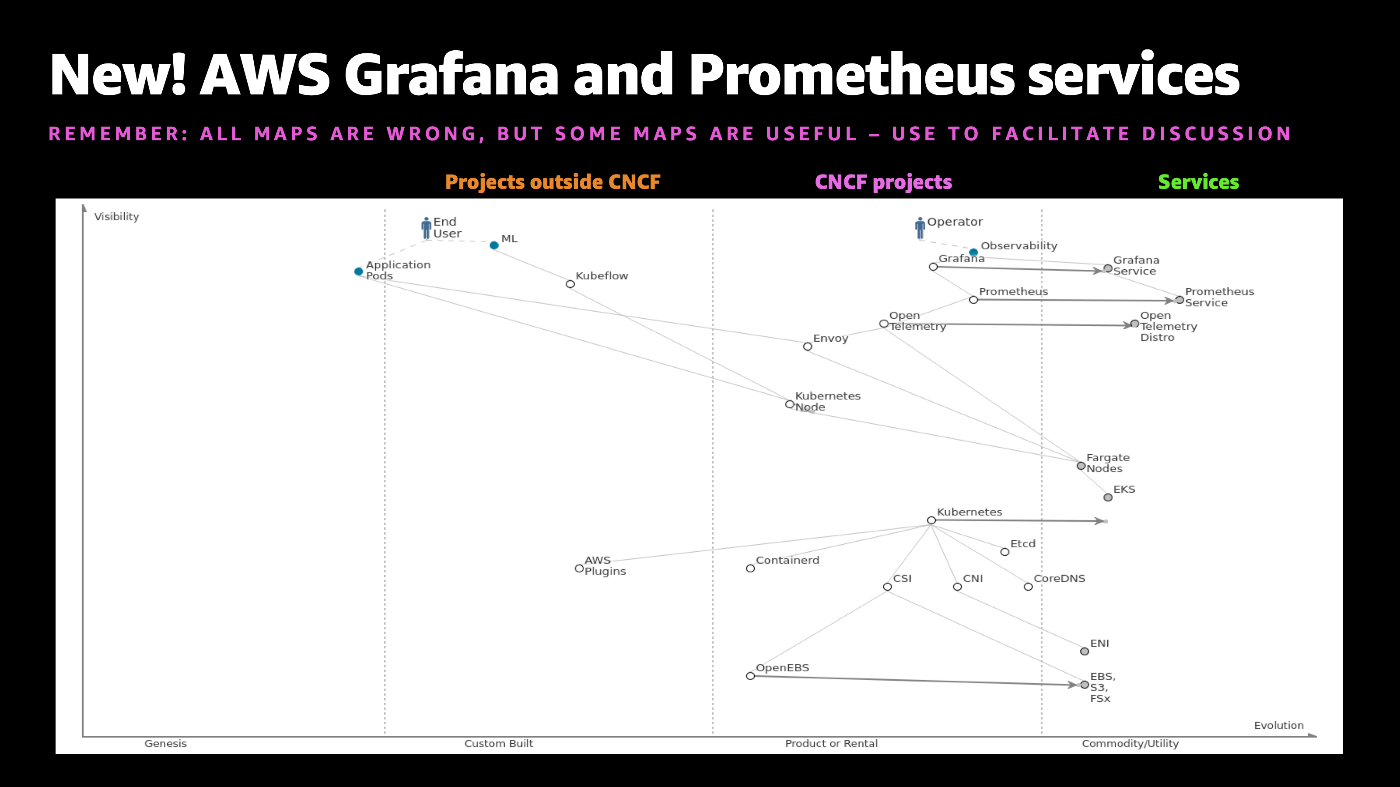Wardley maps / Wardly Mapping について
What is Wardley Mapping?
Wardley Mapping is a technique developed by Simon Wardley for business strategy. It's a way of visually mapping a business's value chain (activities needed to deliver a product or service) to better understand the ecosystem in which the business operates. This tool is particularly useful in helping businesses adapt to and anticipate changes in the market.
Wardley Mapping とは?
Wardley Mappingは、ビジネス戦略のためにSimon Wardleyによって開発された技術です。これは、ビジネスが運営されるエコシステムをよりよく理解するために、ビジネスのバリュー・チェーン(製品やサービスを提供するために必要な活動)を視覚的にマッピングする方法です。このツールは、特にビジネスが市場の変化に適応し、予測するのを助けるのに役立ちます。
Wardley という単語は人名なのか。どうりでググっても英単語が出てこない。
Wardley Mapping is
ビジネスのバリュー・チェーンを視覚的にマッピングする方法 (a way of visually mapping a business's value chain)
ビジネスのバリュー・チェーン is
プロダクトやサービスを提供するために必要な活動 (activities needed to deliver a product or service)
道を調べるのに込み入った詳細な文章より地図で視覚化されたほうが分かりやすいように、ビジネスの戦略と意思決定も同じだよ、という。

書籍にもなっている。
626ページ
2022/6/17
This is the story of my journey, from a bumbling and confused CEO lost in the headlights of change to having a vague idea of what I was doing. I say vague because I’m not going to make grand claims to the techniques that I discuss in this book. It is enough to say that I have found them useful over the last decade whether in finding opportunity, removing waste, helping to organise a team of people or determining the strategy for a company. Will they help you? That depends upon the context that you’re operating in but since the techniques don’t take long to learn then I’ll leave it up to the reader to discover whether they are helpful to them or not. Remember, all models are wrong but some are useful. -- Simon Wardley
これは私の旅の物語です。変化のヘッドライトの中で戸惑い、混乱したCEOから、何をしているのかぼんやりとしたアイデアを持つまでの。ぼんやりとしていると言うのは、この本で話す技術に大それた主張をするつもりはないからです。過去10年間、機会を見つけること、無駄を取り除くこと、人々のチームを組織するのを助けること、会社の戦略を決定することにおいて、それらが役立ったと言うだけで十分です。それらがあなたに役立つかどうか?それは、あなたが操作している文脈に依存しますが、技術を学ぶのに時間がかからないので、それらが役立つかどうかを読者に発見してもらうことにします。覚えておいてください、全てのモデルは間違っていますが、いくつかは役に立ちます。-- Simon Wardley
書籍は Medium で無償公開もされている。
というより、こっちを書籍化したのかな?
章タイトルの一覧を翻訳してみる。
Chapter 1 — On being lost
Chapter 2 — Finding a path
Chapter 3 — Exploring the map
Chapter 4 — Doctrine
Chapter 5 — The play and a decision to act
Chapter 6 — Getting started yourself
Chapter 7 — Finding a new purpose
Chapter 8 — Keeping the wolves at bay
Chapter 9 — Charting the future
Chapter 10 — I wasn’t expecting that!
Chapter 11 — A smorgasbord of the slightly useful
Chapter 12 — The scenario
Chapter 13 — Something wicked this way comes
Chapter 14 — To thine own self be true
Chapter 15 — On the practice of scenario planning
Chapter 16 — Super Looper
Chapter 17 — To infinity and beyond
Chapter 18 — Better for Less
第1章 — 迷子になることについて
第2章 — 道を見つける
第3章 — マップを探索する
第4章 — 教義
第5章 — プレイし行動を決定する(?)
第6章 — 自分自身で始める
第7章 — 新たな目的を見つける
第8章 — 狼を遠ざける
第9章 — 未来を描く
第10章 — それは予期していなかった!
第11章 — ちょっと役に立つものの盛り合わせ
第12章 — シナリオ
第13章 — 何か邪悪なものがこの方向に来る
第14章 — 自分自身に忠実であれ
第15章 — シナリオプランニングの実践について
第16章 — スーパールーパー(?)
第17章 — 無限の彼方へ
第18章 — より良く、より少なく
Keeping the wolves at bay
は慣用句のようだ。
What does it mean when someone says they are keeping wolves at Bay? - Quora
I can’t speak definitively to the origin of this expression but I suspect it is related to an old practice of using hounds to hunt certain animals. Hounds might chase an animal up a tree or otherwise corner it, and would then howl (or ‘bay’) to alert the hunters. So an animal that is ‘at bay’ is being kept away from attacking anyone and is no longer a threat.
The other part of this expression is ‘the wolf.’ The wolf is a common metaphor for any kind of trouble but in particular poverty or other financial distress. The common expression is ‘keep the wolf away from the door,’ which means somehow earning enough money to avoid disaster.
I have never heard the precise expression ‘keeping wolves at bay’ but my guess it’s a combination of the two idioms I discussed above.
この表現の起源について明確に話すことはできませんが、特定の動物を狩るために猟犬を使用する古い習慣に関連しているのではないかと思います。猟犬は動物を木の上に追い詰めたり、追い詰めたりして、遠吠え(または「吠え」)をして狩猟者に警告します。つまり、「寄せ付けられていない」動物は誰からも攻撃されずに遠ざけられており、もはや脅威ではありません。
この表現のもう 1 つの部分は「オオカミ」です。オオカミはあらゆる種類の問題を表す一般的な比喩ですが、特に貧困やその他の経済的苦境を指します。一般的な表現は「狼をドアから遠ざける」で、これは何らかの方法で災害を避けるのに十分なお金を稼ぐことを意味します。
「オオカミを寄せ付けない」という正確な表現を聞いたことはありませんが、おそらく上で説明した 2 つの慣用句を組み合わせたものだと思います。
re:Invent 2020で技術革新の影響を可視化するための手法として Wardley Maps という手法がAdrin Cockroftによって紹介された。[1] ( AWS re:Invent 2020: Adrian Cockcroft’s architecture trends and topics for 2021 ) 本記事ではその概要を解説する。
AWS re:Invent 2020: Adrian Cockcroft’s architecture trends and topics for 2021 - YouTube
セッション自体は Serverless の話から始まっているが、
17:46 あたりから Wardley Maps の話。
ここでは Kubernetes と CNDF 関連のエコシステムを例にとっている。
CNCF Landscape のペライチは Map というよりもはや視力検査表(C が色んな大きさと向きをしているやつね)じゃないか、と。

これを進化(技術の進歩)に対するバリューチェーンとしてマッピングすると、

縦軸にバリューチェーン・ポジショニング。
これは、要はどれだけエンドユーザに近く、見えやすいところにいる技術か、というもの。
Kubernetes はエンジニアが使う技術なので、バリューチェーンの最上位にはユーザとオペレータが配置されている。
最下層までいくとデータセンタという物理層がある。
その間に上位の方では概念やフレームワークや標準化仕様が、より下層に行くと具体的なサービスやミドルウェアが多く登場している。
横軸にムーブメント。
これは、イノベーター、アーリーアダプターとかのハイプ・サイクルに似たやつで、技術進歩のライフサイクルを4つのグラデーショナルなレベルに分けている。
Genesis -> Custom Built -> Product (+ Rental) -> Commodity (+ Utitlity)
K8s のノード管理の面で見ると、 Fargate や EKS によって既に Commodity 化している分野がある一方で、 Containerd などが担っているコンテナランタイム部分は実装のバリエーションが増えいてるとはいえ、Commodity 化しているとまではいえない。最も左(Genesis 側)にいくと、ML への応用や Application Pod などがまだぜんぜん膾炙していない技術としてマッピングされている(ただ、なぜそういう配置なのかちょっとよく分からない)。
この Adrian さんの図だと
-
Commodityを既にServicesとして商品化されているもの。 -
Product or rentalをCNCF projectsに採択されるぐらい認められている存在。 -
Custom BuiltをCNCFにもまだ入ってこないアーリーなもの。
のように独自に対応させて分かりやすくしているようだ。
この全体像のなかで、新しく AWS でリリースされた Managed の Grafana と Prometheus のサービスが新しい Commodity 化を達成している、ということを図示している。

正直、セッションの話の権威付けに Wardley Maps を持ち込んでるようにも見えるのだが。 Grafana Services や Prometheus Services がこの図でうまく位置付けを説明できてはいるけど、それが AWS や AWS ユーザにとって何?という。
AWS やクラウドサービスプロバイダーは、こういうふうな戦略もとうぜん加味して新しいサービスを生み出していくから、あなたたちは Commoditity 化されない領域や技術にビジネスのコア技術をせんたくしなければならない。
というメッセージを受け取ることはできるけど、それはまあ別にこれに限った話でもなく。
先のまつざきさんのブログの 「追記」 でも紹介されている、 DDD Euro 2020 のセッション。
この講演の主題は、エリック・エヴァンスの提唱した Context Map のほうで、 Wardley Maps が主題ではない。
Wardley Mapping 本の第一章を読み終わった。一番の感想はこれかなあ。
可視化すること、立体的に捉えること、つまり地図を描いて眺め、共有し、書き込み、弄くり倒すこことの重要性。
あと、『孫子の兵法』に着想を得て考案した、というのもいい。
Wardley Mapping 本はだいぶ分厚いのでさきに https://learnwardleymapping.com/ こっちから読み終えた。これは、簡潔に Wardley Mapping のやり方がまとまっていて、かつ考え方や知見?が整理されている。